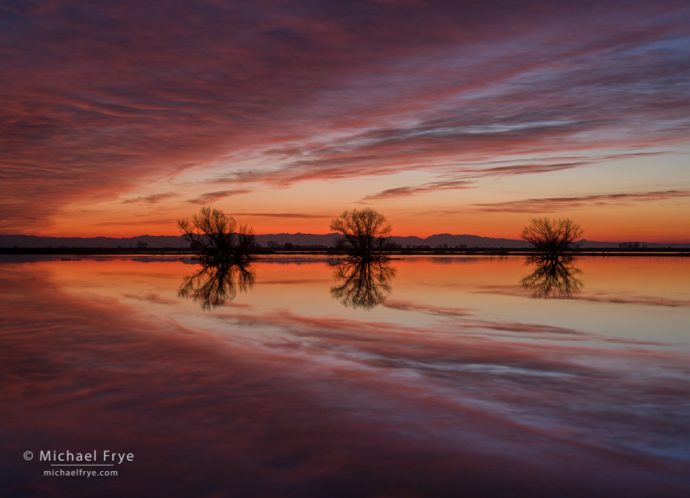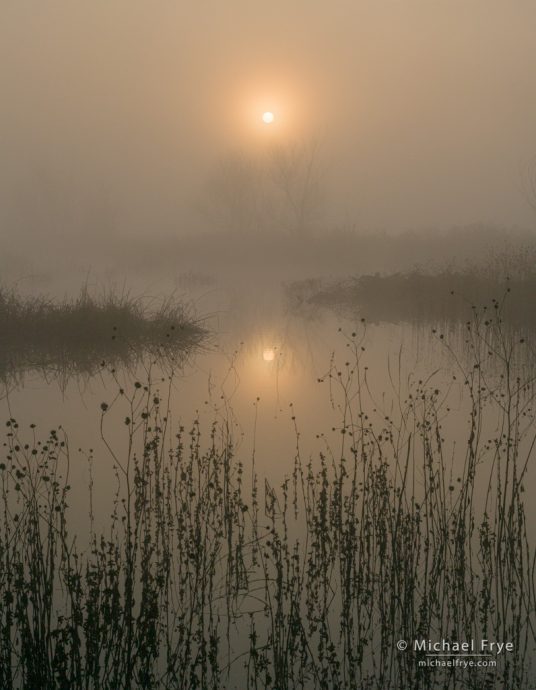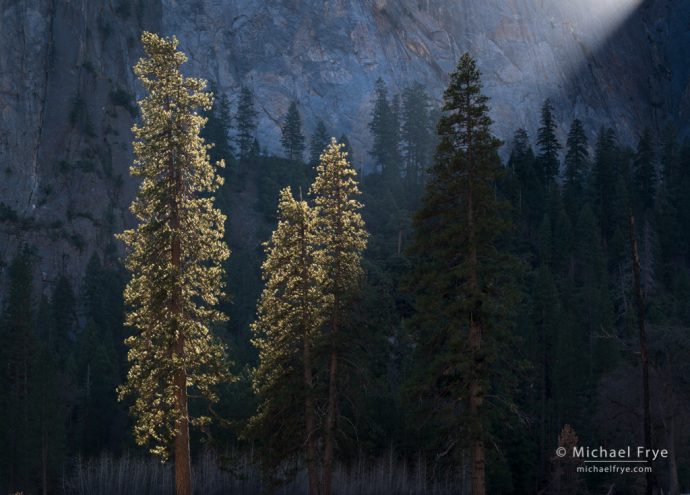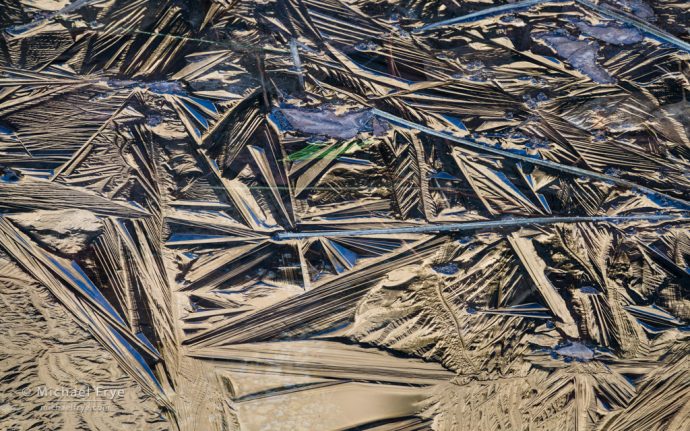
Sunset in a San Joaquin Valley marsh. We’ve had some beautiful sunsets this winter in that other valley – the Central Valley of California – where the wide horizons can showcase the colorful skies. I made this exposure about 45 minutes after sunset. By then it was so dark that my eyes could barely see the color, but the camera could capture it easily.
Which is more important, the light or the subject?
I would say it’s the light – hands down. After all, we don’t really photograph objects; we photograph the light reflected off of objects. Light has everything to do with how a subject looks, and whether it will make an interesting photograph or not. A great subject with ordinary light will make an ordinary photograph. An ordinary subject with great light could make a great photograph.
For me, Yosemite Valley is about an hour’s drive to the east. If I drive 90 minutes in the other direction, to the west, I can reach the marshes of California’s Central Valley. I think if you asked photographers whether they’d rather go to Yosemite Valley or the Central Valley, 99 out of a 100 would pick Yosemite Valley. And all things being equal, I’d probably make the same choice. But in photography, light is the great equalizer. I know that if the light and weather are more interesting in the Central Valley I’ll have better opportunities there than in Yosemite Valley.
It’s been a dry winter here in California, with few storms to create mist or snow in Yosemite. But there have been many foggy mornings in the Central Valley, and we’ve had enough clouds to create some beautiful sunsets, which are enhanced by the wide horizons down there.
And even in Yosemite I’m always looking for the most interesting light, which may not involve Half Dome or El Capitan. On a clear, sunny day the most interesting light might be gold reflections in the river or on ice, or backlit trees.
Developing a sense of light is as important as developing an eye for composition. I think every photographer recognizes spectacular light, but they may not notice more subtle – yet equally beautiful – lighting events.
Like anything, developing your eye for light takes practice, but luckily you can practice anywhere, anytime, even without a camera. Try to notice interesting light while you’re driving to work, or as the sun streams through the windows of your house on a winter afternoon. Look for reflections in windows or water glasses. Notice how soft light or hard light changes people’s appearance. Look for interesting shadows. Beautiful light is all around you, all the time – you just have to notice it.
“In the right light, at the right time, everything is extraordinary.”
— Aaron Rose

Foggy sunrise, San Joaquin Valley. A marsh might not be most people’s idea of a spectacular landscape, but can look spectacular when the sun rises through the fog.

Backlit ponderosa pines, Yosemite. The most interesting light in Yosemite Valley might not include Half Dome, but perhaps just backlight on pine trees.

Ice patterns, Yosemite. Looking for interesting light might require finding just the right angle to see gold and blue reflections in ice.
— Michael Frye
Related Posts: Crystal Patterns; Can Intimate Landscapes Have a Mood?
Michael Frye is a professional photographer specializing in landscapes and nature. He is the author or principal photographer of The Photographer’s Guide to Yosemite, Yosemite Meditations, Yosemite Meditations for Women, Yosemite Meditations for Adventurers, and Digital Landscape Photography: In the Footsteps of Ansel Adams and the Great Masters. He has also written three eBooks: Light & Land: Landscapes in the Digital Darkroom, Exposure for Outdoor Photography, and Landscapes in Lightroom: The Essential Step-by-Step Guide. Michael has written numerous magazine articles on the art and technique of photography, and his images have been published in over thirty countries around the world. Michael has lived either in or near Yosemite National Park since 1983, currently residing just outside the park in Mariposa, California.









Thank you for sharing your beautiful images. I like the perfect symmetry in the picture at the top very much.
I really like the sun rising through the fog.
I’ve gone out to the Central Valley more than once because of your posts. I love being there at sunset.
Thanks, Michael, so true. My life is spent looking for beautiful light, whether I have a camera with me or not. Lovely photo of the sun in the mist.
Michael, Thank you for sharing your about light. You have great vision for subjects and light.
Hi Michael, I’ve enjoyed your blogs for many years. I’m presently in Monterey, CA and would like to make a day trip to the central valley for some bird and sunset photography. I would appreciate your advice on where I might go for this type of photography. Thanks.
It is so frustrating to be driving to or from work and notice beautiful light and not have a camera or a place to stop.
Awesome Photography As Usual Michael.